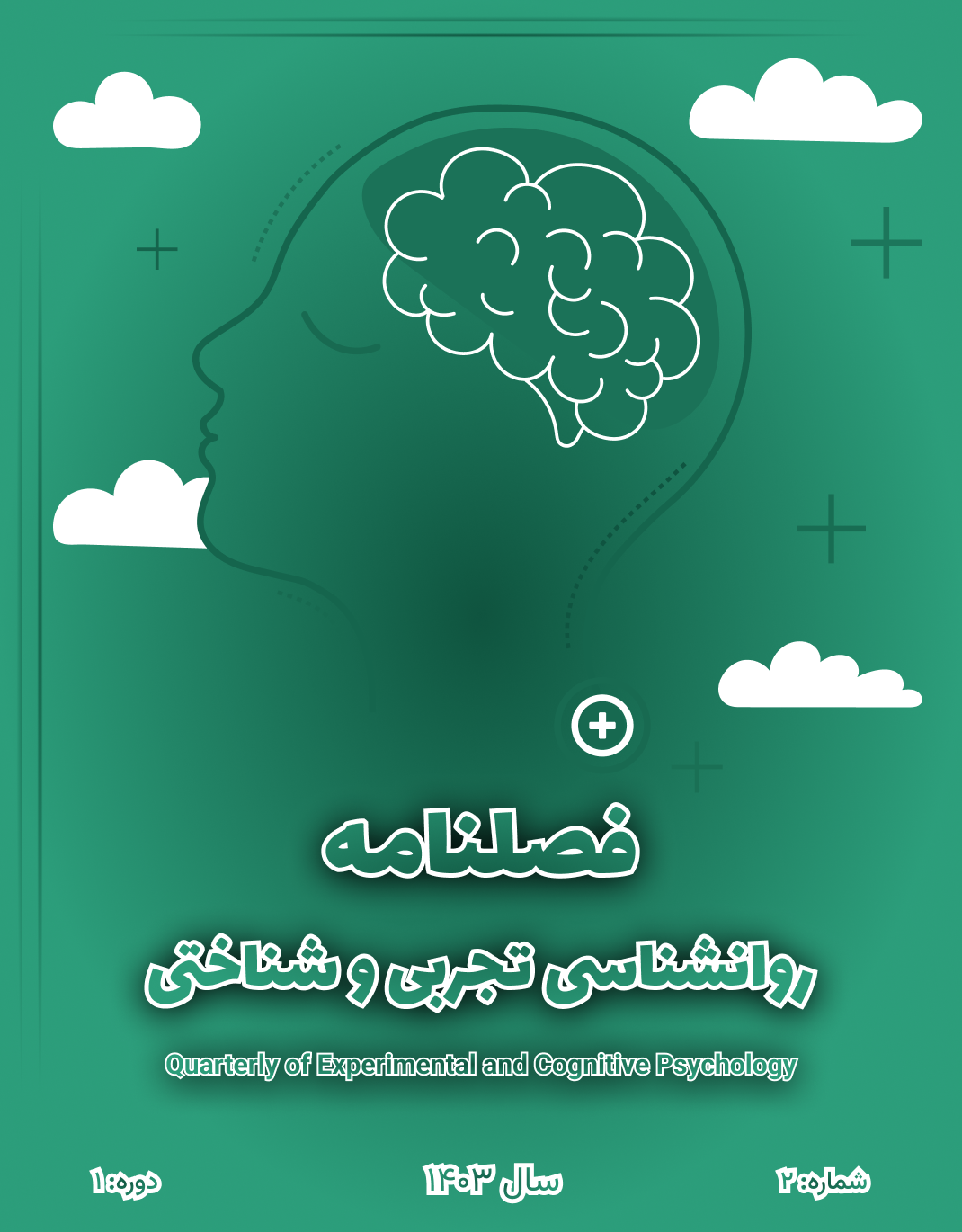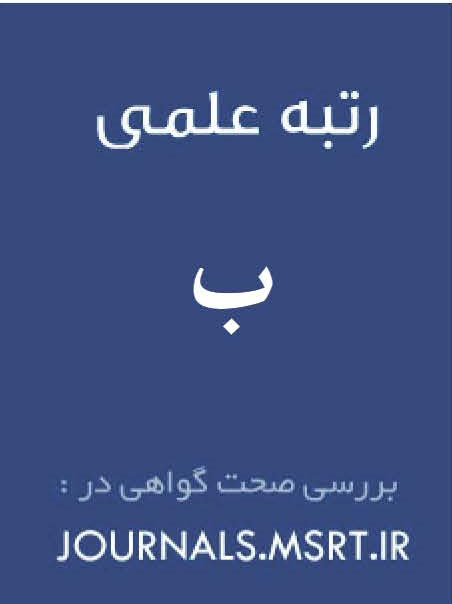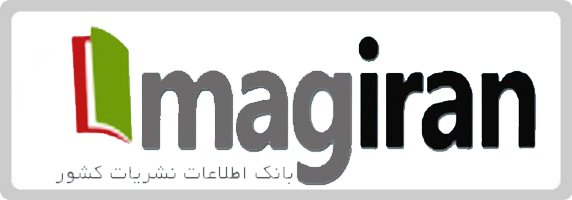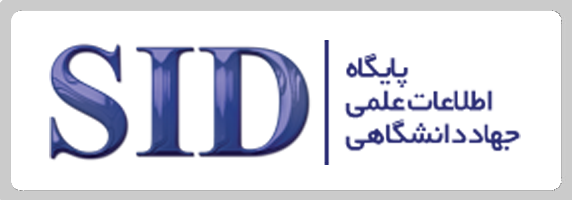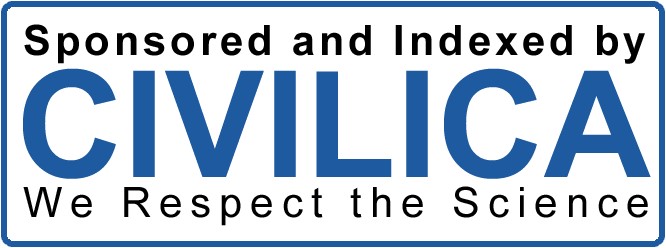ویژگیهای روانسنجی پرسشنامه فنوتیپ گسترده اوتیسم در دانشجویان
کلمات کلیدی:
اوتیسم, روایی, پایایی, روانسنجیچکیده
هدف: هدف این پژوهش بررسی ویژگی¬های روان سنجی پرسشنامه فنوتیپ گسترده اوتیسم در جامعه ایرانی بود.
مواد و روش: جامعه آماری این پژوهش شامل مردان دانشكده¬های فنی دانشگاه¬های شهر تهران درسال تحصیلی 1398– 1397 بود که 240 از آنها به شیوه نمونه¬گیری تصادفی چند مرحله¬ای برای شرکت در مطالعه انتخاب شدند. داده¬ها با استفاده از تحلیل عاملی اکتشافی و تأییدی، ضریب همبستگی پیرسون و ضریب آلفای كرونباخ تجزیه و تحلیل شدند.
یافتهها: تحلیل عاملی اكتشافی از الگوی سه عاملی پرسشنامه فنوتیپ گسترده اوتیسم حمایت كرد و نتایج تحلیل عاملی تأییدی نشان دهنده برازش مناسب مدل سه عاملی ابزار بود. الگوی ضرایب همبستگی خرده مقیاس¬های پرسشنامه فنوتیپ گسترده اوتیسم با نمره ناگویی هیجان و پرسشنامه همدلی بیانگر روایی ملاكی این پرسشنامه بود. همسانی درونی این ابزار بالای 80% بوده وهمچنین ضریب پایایی بازآزمایی نشان دهنده ثبات نمرات بود.
نتیجهگیری: نتایج مطالعه حاضر نشان داد كه نسخه فارسی پرسشنامه فنوتیپ گسترده اوتیسم دارای ساختار عاملی، اعتبار و روایی مناسبی در جامعه ایران است.
دانلودها
مراجع
Asl, E. M., Mahaki, B., Khanjani, S., & Mohammadian, Y. (2021). The assessment of alexithymia across positive and negative emotions: The psychometric properties of the Iranian version of the perth alexithymia questionnaire. Iranian journal of psychiatry and behavioral sciences, 14(4). https://doi.org/10.5812/ijpbs.102317
Baena, S., Hidalgo, V., & Jiménez, L. (2025). 'That's just the way it is': The experiences of co-habiting Spanish siblings of individuals with autism spectrum disorder. Journal of Child and Family Studies, 1-16. https://doi.org/10.1007/s10826-024-02979-9
Bagby, R. M., Taylor, G. J., & Parker, J. D. (1994). The twenty-item Toronto Alexithymia Scale-II. Convergent, discriminant, and concurrent validity. Journal of psychosomatic research, 38(1), 33-40. https://doi.org/10.1016/0022-3999(94)90006-X
Bargiela, S., Steward, R., & Mandy, W. (2016). The experiences of late-diagnosed women with autism spectrum conditions: An investigation of the female autism phenotype. Journal of Autism and Developmental Disorders, 46(10), 3281-3294. https://doi.org/10.1007/s10803-016-2872-8
Baron-Cohen, S., Wheelwright, S., Skinner, R., Martin, J., & Clubley, E. (2001). The autism-spectrum quotient (AQ): Evidence from asperger syndrome/high-functioning autism, malesand females, scientists and mathematiciansJO - Journal of autism and developmental disorders. 31(1), 5-17. https://doi.org/10.1023/A:1005653411471ER -
Batson, C. D., Fultz, J., & Schoenrade, P. A. (1987). Distress and empathy: Two qualitatively distinct vicarious emotions with different motivational consequences. Journal of personality, 55(1), 19-39. https://doi.org/10.1111/j.1467-6494.1987.tb00426.x
Bishop, D. V., Maybery, M., Maley, A., Wong, D., Hill, W., & Hallmayer, J. (2004). Using self‐report to identify the broad phenotype in parents of children with autistic spectrum disorders: a study using the Autism‐Spectrum Quotient. Journal of Child Psychology and Psychiatry, 45(8), 1431-1436. https://doi.org/10.1111/j.1469-7610.2004.00325.x
Bojanek, E. K., Kelly, S. E., Schmitt, L., Pulver, S. L., Sweeney, J. A., Sprenger, A., Unruh, K. E., & Mosconi, M. W. (2025). Sensorimotor Behavior in Individuals With Autism Spectrum Disorder and Their Unaffected Biological Parents. Autism Research, 18(3), 498-514. https://doi.org/10.1002/aur.70000
Bolton, P., Macdonald, H., Pickles, A., Rios, P. A., Goode, S., Crowson, M., Bailey, A., & Rutter, M. (1994). A case‐control family history study of autism. Journal of Child Psychology and Psychiatry, 35(5), 877-900. https://doi.org/10.1111/j.1469-7610.1994.tb02300.x
Chaki, H. B., & Faran, Y. (2025). The Effect of Family Characteristics on the Functioning of a Child with an Autistic Spectrum Disorder in Bedouin Society in Israel. Journal of Autism and Developmental Disorders, 55(3), 1078-1087. https://doi.org/10.1007/s10803-024-06255-z
Constantino, J. N., & Gruber, C. P. (2012). Social responsiveness scale: SRS-2. Western psychological services. https://www.wpspublish.com/srs-2-social-responsiveness-scale-second-edition.html
Du, X., Gao, S., Huang, T., Liang, J., & Xiao, X. (2025). "Out of sight out of mind": attentional characteristics in mothers who have children with autism. BMC Women's Health, 25(1), 53. https://doi.org/10.1186/s12905-024-03534-w
Elemo, A. S., & Can, E. (2025a). Depression among mothers of children with autism. Psychol Health Med, 30(3), 540-554. https://doi.org/10.1080/13548506.2024.2440655
Elemo, A. S., & Can, E. (2025b). Depression and psychological help-seeking attitude among Turkish mothers of children with autism: problem-focused coping as a mediator. Psychology, Health & Medicine, 30(3), 540-554. https://doi.org/10.1080/13548506.2024.2440655
Godoy-Gimenez, M., Gonzalez-Rodriguez, A., Cañadas, F., Estévez, A. F., & Sayans-Jimenez, P. (2018). Psychometric properties of the Spanish version of the broad autism phenotype questionnaire: Strengths, weaknesses, and future improvements. Journal of Autism and Developmental Disorders, 48(3), 770-783. https://doi.org/10.1007/s10803-017-3438-0
Hull, L., Petrides, K. V., & Mandy, W. (2020). The female autism phenotype and camouflaging: A narrative review. Review Journal of Autism and Developmental Disorders, 7(4), 306-317. https://doi.org/10.1007/s40489-020-00197-9
Hurley, R. S., Losh, M., Parlier, M., Reznick, J. S., & Piven, J. (2007). The broad autism phenotype questionnaire. Journal of Autism and Developmental Disorders, 37(9), 1679-1690. https://doi.org/10.1007/s10803-006-0299-3
Losh, M., Adolphs, R., Poe, M. D., Couture, S., Penn, D., Baranek, G. T., & Piven, J. (2009). Neuropsychological profile of autism and the broad autism phenotype. Archives of General Psychiatry, 66(5), 518-526. https://doi.org/10.1001/archgenpsychiatry.2009.34
Lundström, S., Reichenberg, A., Anckarsäter, H., Lichtenstein, P., & Gillberg, C. (2015). Autism phenotype versus registered diagnosis in Swedish children: prevalence trends over 10 years in general population samples. bmj, 350. https://doi.org/10.1136/bmj.h1961
Meera, S. S., Girimaji, S. C., Seshadri, S. P., Philip, M., Shivashankar, N., Morgan, P., & Piven, J. (2015). Translation of the Broad Autism Phenotype Questionnaire to an Indian language: A description of the process. Asian Journal of Psychiatry, 15, 62-67. https://doi.org/10.1016/j.ajp.2015.04.013
Mottron, L., & Bzdok, D. (2020). Autism spectrum heterogeneity: fact or artifact? Molecular Psychiatry, 25(12), 3178-3185. https://doi.org/10.1038/s41380-020-0748-y
Piven, J., Palmer, P., Jacobi, D., Childress, D., & Arndt, S. (1997). Broader autism phenotype: evidence from a family history study of multiple-incidence autism families. American Journal of Psychiatry, 154(2), 185-190. https://doi.org/10.1176/ajp.154.2.185
Piven, J., Palmer, P., Landa, R., Santangelo, S., Jacobi, D., & Childress, D. (1997). Personality and language characteristics in parents from multiple‐incidence autism families. American Journal of Medical Genetics, 74(4), 398-411. https://doi.org/10.1002/(SICI)1096-8628(19970725)74:4<398::AID-AJMG11>3.3.CO;2-K
Sasson, N. J., Lam, K. S., Childress, D., Parlier, M., Daniels, J. L., & Piven, J. (2013). The Broad Autism Phenotype Questionnaire: Prevalence and Diagnostic Classification. Autism Research, 6(2), 134-143DO - 110.1002/aur.1272. https://pubmed.ncbi.nlm.nih.gov/23427091/
Sung, Y. J., Dawson, G., Munson, J., Estes, A., Schellenberg, G. D., & Wijsman, E. M. (2005). Genetic investigation of quantitative traits related to autism: use of multivariate polygenic models with ascertainment adjustment. The American Journal of Human Genetics, 76(1), 68-81. https://doi.org/10.1086/426951
Wilfert, A. B., Turner, T. N., Murali, S. C., Hsieh, P., Sulovari, A., Wang, T., Coe, B. P., Guo, H., Hoekzema, K., Bakken, T. E., & Winterkorn, L. H. (2021). Recent ultra-rare inherited variants implicate new autism candidate risk genes. Nature Genetics, 53(8), 1125-1134. https://doi.org/10.1038/s41588-021-00899-8
دانلود
چاپ شده
ارسال
بازنگری
پذیرش
شماره
نوع مقاله
مجوز
حق نشر 2025 ژاله قربانپور کلاته ملائی, هائیده صابری, سیمین بشردوست (نویسنده)

این پروژه تحت مجوز بین المللی Creative Commons Attribution-NonCommercial 4.0 می باشد.
